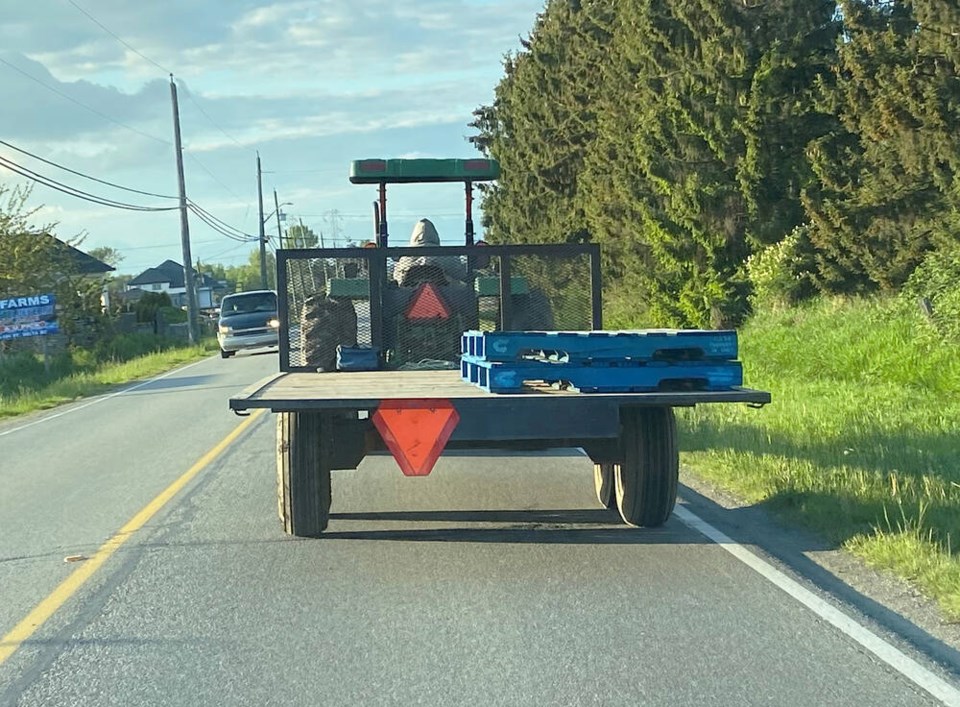The City of Delta has lost acreage in the Agricultural Land Reserve (ALR) over the past decade but is still doing better than other communities when it comes to retaining farming.
That’s according to a draft of the Delta Agricultural Plan update, which has been in the works for over a couple of years and recently reviewed by the Agricultural Advisory Committee.
A final draft still has to come to the committee for endorsement and council approval, as well as requiring an implementation strategy.
The plan aims to identify current issues for Delta’s agriculture industry and recommend actions for the municipality to strengthen the long-term viability of farming in the community.
The draft report says much has changed on the agricultural scene since the first plan was approved back in 2011 when it comes to the agriculture and food sector, as well as provincial and federal policies and regulations.
In Delta, there’s been changes to the agricultural land base and fluctuations in crops and livestock grown and raised locally.
Delta has approximately 22,240 acres (9,000) hectares of land in the ALR, corresponding to 50 per cent of its total land base, while approximately 75 per cent of the ALR land in Delta is actively used for farming.
In 2002, Delta had 23,295 acres (9,427 hectares) in the ALR, but that number slipped to 22,235 acres (8,998) hectares by 2021.
Changes to the agricultural land base can be attributed to the construction of the South Fraser Perimeter Road (Highway 17) and the allocation of ALR lands to Tsawwassen First Nation as part of the treaty negotiations, which came into effect in 2009, the report explains.
“Despite these changes, Delta has been very successful in retaining ALR land over the past 20 years (1997-2016) in comparison to other municipalities within Metro Vancouver according to study recently completed by Kwantlen Polytechnic University. Data for the project was analyzed from six municipalities in Metro Vancouver - Delta, Maple Ridge, Pitt Meadows, Richmond, Surrey and the Township of Langley. In all six municipalities during that period, there were approximately 422 approved applications for non-farm use or subdivision, with 67 (16%) of those successful applications in Delta,” the report notes.
“Of the successful applications in Delta, 49 were for non-farm use and 18 for subdivision. Many hectares had been removed in Delta for the construction of the South Fraser Perimeter Road but, compared to the other communities in the study, Delta has been the most successful in retaining ALR land and retaining farm use over the past 20 years.”
The report also notes that the numbers are also reflected in data published in the Census of Agriculture, which indicates that the size of the farms in Delta has remained consistent over the last 10 years with around 50 per cent of the farms between 10-to-69 acres in size.
As of 2016, there were 330 parcels in the ALR less than five acres, representing 43 per cent of all parcels in the ALR in Delta, pointing to few subdivisions occurring or being approved by the city or the Agricultural Land Commission.
Large parcels in the ALR in Delta allows for economies of scale and increased farm viability for a variety of agricultural activities, the report adds.
Meanwhile, the number of actively farmed parcels dropped from 518 parcels in 2002 to 482 parcels in 2016, but the average parcel size increased.
The report also notes there has been an increase in blueberry, cranberry, and potato production by area, more production of forage, and an increase in fields in pasture.
However, the largest change of production within Delta has occurred in the greenhouse sector.
“In 2010 there were 152 ha under glass greenhouses and 11 ha under polyethylene structures. In 2016, there were 179 ha under glass greenhouses and 10 ha under polyethylene structures. The crops grown within the greenhouses are primarily vegetable vine crops (tomatoes, sweet peppers, and cucumbers), strawberries, propagation/nursery, and cannabis,” the report notes.
“Since the legalization of cannabis in 2018, there have been expansions and contractions within that industry locally. Some existing greenhouses have converted to cannabis production and new greenhouses have been constructed for cannabis production, while conversely more recently some cannabis greenhouses have reverted back to growing fruit and vegetables. This fluctuation points to the fluidity of these commodities and the ability of Delta operators to shift production with market demand.”




